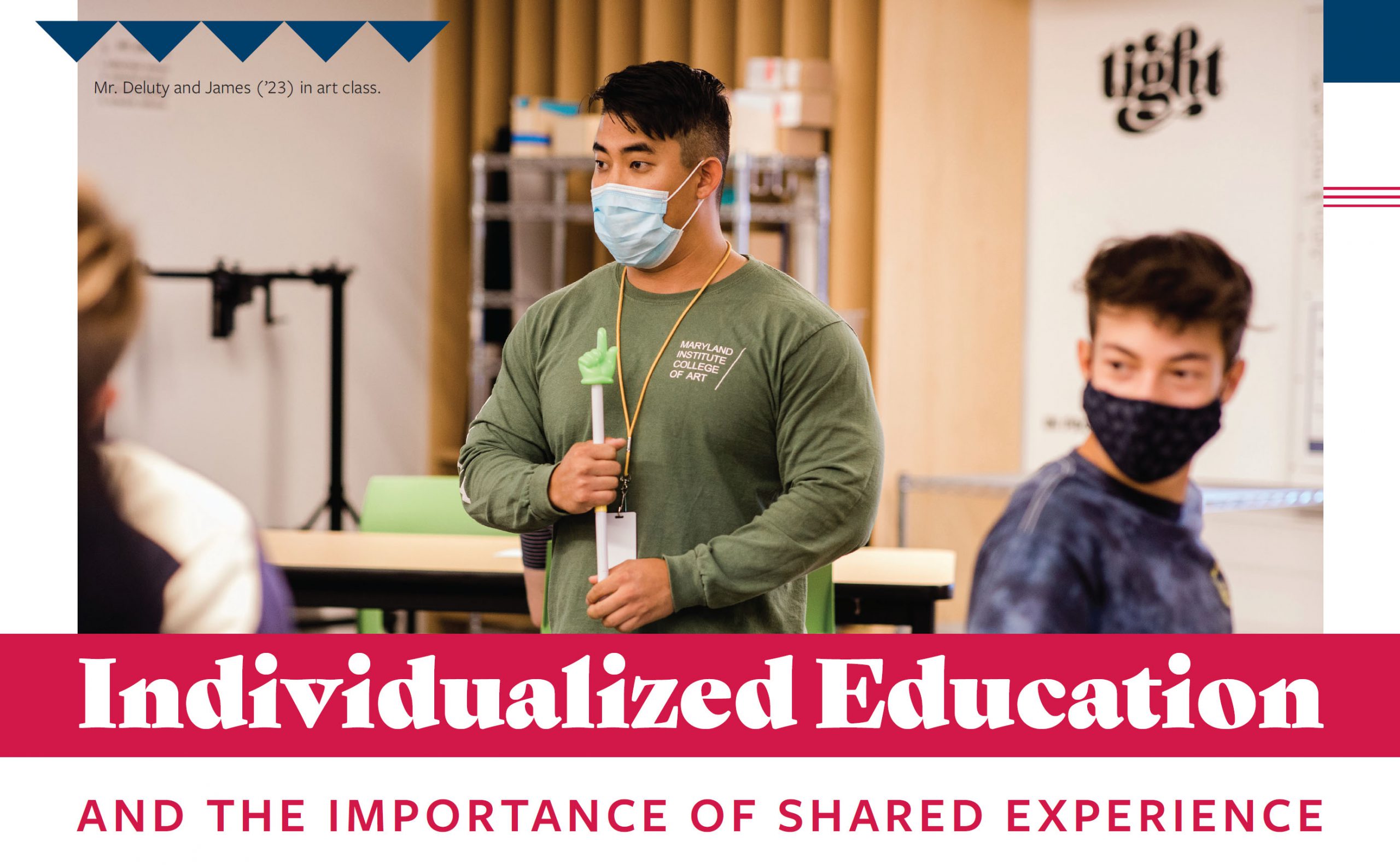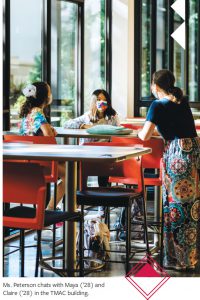
By Dr. John Stegeman, Head of Upper School
IN MY SENIOR YEAR OF COLLEGE, I CAME UP ONE CREDIT SHY OF THE graduation requirements, so I completed my degree with an online class from a cabin outside of Steamboat Springs, Colorado. That class offered me the flexibility to finish my studies and move on with my life at the same time. I still remember sitting in that cabin on sunny mountain summer days posting my thoughts about The Catcher in the Rye to the online discussion board. I never met the professor or any of my classmates in person. In fact, I never interacted with them in real time, only through our delayed and impersonal correspondence. It wasn’t great, but it got the job done.
 When I was in high school, I was part of a cohort of students who took an advanced sequence of courses. They were not special courses; we just took them a year early. The cohort formed in middle school and continued through junior year. I know I learned a lot of foundational concepts that were important to the rest of my education—the quadratic equation, how to write a thesis statement, some history stuff. And I know it was important to my development as a thinker to be challenged and stretched. But guess how many specific lessons I remember from those five years of coursework? Zero. Zip. Zilch. Nada. I remember Brett—he died of cancer in his twenties. I remember Chris—he made a billion dollars as an early investor in Twitter. Phil and I roomed together our freshman year of college, and we had lunch this past summer.
When I was in high school, I was part of a cohort of students who took an advanced sequence of courses. They were not special courses; we just took them a year early. The cohort formed in middle school and continued through junior year. I know I learned a lot of foundational concepts that were important to the rest of my education—the quadratic equation, how to write a thesis statement, some history stuff. And I know it was important to my development as a thinker to be challenged and stretched. But guess how many specific lessons I remember from those five years of coursework? Zero. Zip. Zilch. Nada. I remember Brett—he died of cancer in his twenties. I remember Chris—he made a billion dollars as an early investor in Twitter. Phil and I roomed together our freshman year of college, and we had lunch this past summer.
At Eastside Prep, we offer students a highly individualized education. Students have lots of choice in their course selection, within courses themselves, and with extra- and co-curricular activities that they can opt into outside of class. The tools of remote learning have allowed us to keep students moving forward with their studies over the past two years. They offered even more possibilities for individualization, and they enabled us to create a real-time shared experience. But sharing a learning experience through a screen is not the same as being together in person. As we have returned to in-person instruction, we have emphasized shared experiences as much as possible. Individualized learning helps students maximize their cognitive growth, and we remain committed to it. Through shared experiences, students develop identity, belonging, community ties, collaborative skills, and so much more. These things are foundational to our mission to Think Critically, Act Responsibly, Lead Compassionately, and Innovate Wisely. Each of those aspirations requires students to apply well-developed thinking skills through the lens of one’s membership in a learning community.
COVID-19 is a highly infectious disease that is transmitted through tiny droplets of water emitted when people sneeze, cough, or simply breathe. It is impossible to bring eighteen students together in a classroom with a teacher to spend over an hour discussing poetry, conducting a laboratory experiment, or creating art without increasing the risk of spreading this disease. The things we do to minimize that risk—masking, dispersed and outdoor eating, one-directional travel patterns—have proven to be very effective. But those mitigation efforts also make the shared experience of learning together less personal, and a little less shared. We miss the wry smile of a student when they reply sarcastically to a teacher’s question. The Spanish teacher (or student) cannot distinguish camina (he or she walks) from caminan (they walk) through a KN-95 mask.
The job of school leadership during the COVID-19 pandemic has been an exercise in navigating the tension between the community health risks of learning together and creating the conditions for optimal learning experiences. Increasing one increases the other—reducing one reduces the other. This experience has been difficult for all because it is an inherently difficult thing. So often in the past year, I have left one conversation with a student, teacher, or parent who expressed how important it was to them to have the opportunity of an in-person learning experience, only to discuss with the next person how important it was to keep our students and teachers safe, even if that meant staying remote just a little longer.
THE TENSION BETWEEN COVID-SAFE AND OPTIMAL LEARNING IS QUITE LIKE THE EVER-PRESENT TENSION BETWEEN INDIVIDUALIZED LEARNING AND SHARED EXPERIENCES.
The tension between COVID-safe and optimal learning is quite like the ever-present tension between individualized learning and shared experiences. Both things are good, both things are necessary, they’re just hard to have together. Eastside Prep has always done a great job creating as much of each as possible. Students select from eight different English/Social Science course pairings in the tenth grade alone. Even this year, with no international travel, students have twenty-four distinct options for EBC trips in the Upper School. But everybody picks one and creates a shared experience there. Everybody joins a fall orientation with their grade, and each student joins an Advisory group to share that experience with eleven others.
Oprah Winfrey once said, “And how do you know when you’re doing something right? It feels so. What I know now is that feelings are really your GPS system for life.” I don’t know when Oprah said that, but it must have been in the before-times. For most of us, everything about COVID has felt wrong. But those feelings were misleading. We were not doing the wrong thing. We were doing the right thing, it was just a hard thing. We have been making hard choices, together, for two years now. As we continue life on campus and transition to a post-COVID experience, many things may continue to feel a bit off. Change is hard, even when it is good and the right thing to do. We are all stronger by walking this path together, through our shared experience as a school community.

